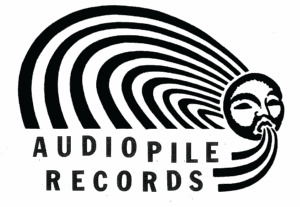Universal Synthesizer Interface Vol III
Label: We Are Busy Bodies
Genre: Highlights, Electronic, Experimental
$36.99
Availability: In stock
Audiopile Review: Vancouver’s extremely active and engaged experimental electronic music scene stretches back at least to the 1990s. But a lot of the activity has happened live, with releases coming in a piecemeal fashion, if at all. With the arrival of cassette label Hotham Sound around 2016, Vancouver’s bleepy bloopy scene gained a vital curatorial focus. Perhaps ironically, a label from Toronto has put this focus down on wax. Specifically, the good folks at We Are Busy Bodies have taken responsibility for vinyl releases by Hotham Sound artists like MIDI Janitor and Mount Maxwell. And they’ve done all three volumes of Kristen Roos’ ‘Universal Synthesizer Interface’ series. Roos is a multidisciplinary artist and absolute mainstay of the Vancouver scene. The ‘Universal Synthesizer…’ albums use outdated and esoteric sequencing software to make charming and approachable music in the vein of Laurie Spiegel and Maggi Payne. This latest volume concentrates on an application called UpBeat, which was hailed as ‘the world’s best drum machine’, back in 1987. While that means a strong focus on rhythm, ‘…Vol. III’ is as melodically lovely as we’ve come to expect from this guy. Like the kind of enchanting electronic obscurities unearthed by Music from Memory, especially Vito Ricci and Roberto Musci? You are gonna love this one.
In 1984, Joel Chadabe founded Intelligent Computer Music Systems Inc, known simply as Intelligent Music. Chadabe was a musician and educator, and an early champion of interactive computer music and composition. In a short period of time (1986-1990) Intelligent Music published a series of MIDI sequencing software titles that would have rippling effects throughout the music world. These programs were a reflection of Chadabe’s desire to create intelligent, algorithmic tools that allowed users to adjust aspects of their music while a computer algorithm was composing it (M, Jam Factory, UpBeat, MidiDraw, Ovaltune, Realtime, as well as an unreleased first version of Miller Puckette’s Max). Intelligent compositional tools for computers had been floating around for decades in mainframe computer labs (particularly in the work of Max Mathews and Laurie Spiegel at Bell Labs), but they had largely only been accessible to people working in academic or corporate laboratories. With the birth of Intelligent Music, these tools became available to anyone with a home studio.
As the personal computers of this era had become less expensive and more accessible, they had also grown exponentially in processing power and seeming intelligence. Many wondered if machine consciousness couldn’t be far behind. In the music press from this time, we find the same two words used again and again to describe algorithmic computer systems: smart and intelligent. The tone of such articles may seem quaint by today’s standards, when AI and algorithmic control underpin so much of our technology, but the question of machine intelligence remains.
This third volume of Universal Synthesizer Interface continues with my research into early MIDI sequencing software for personal computers. Focusing exclusively on the most obscure of Intelligent Music’s software creations – UpBeat: The Intelligent Rhythm Sequencer, released in 1987. Hailed by reviewers of the time as ‘the world’s best drum machine,’ UpBeat allowed MIDI compatible hardware to be saved as preset devices that could then be called up as individual tracks in its software interface. What made it truly unique however was its ability to send looping MIDI patterns to drum machines that could then play the loops in perpetuity while the user made real time adjustments on the fly. While common in today’s digital audio workstations, this was a true novelty at the time of UpBeat’s release. In addition to this, the program also offered intelligent control over each individual drum sound, allowing users to make algorithmic changes in note density, timing, articulation, and velocity. Such features have been a joy to use, and a crucial component in the creation of this collection of poly-rhythmic tracks.
This album is dedicated to the inspiration and ideas of the late Joel Chadabe. My sincere thanks to David Zicarelli, and Eric Ameres for their correspondence and help, Antony Widoff, and especially John Offenhartz for whom there wouldn’t be an Upbeat to create with.





